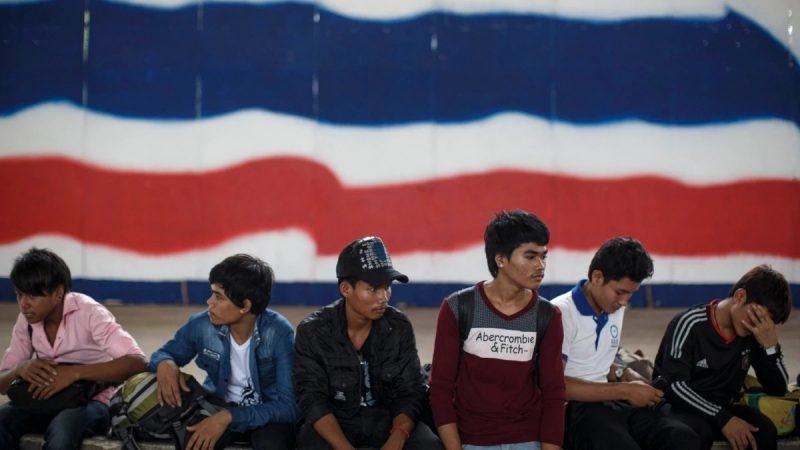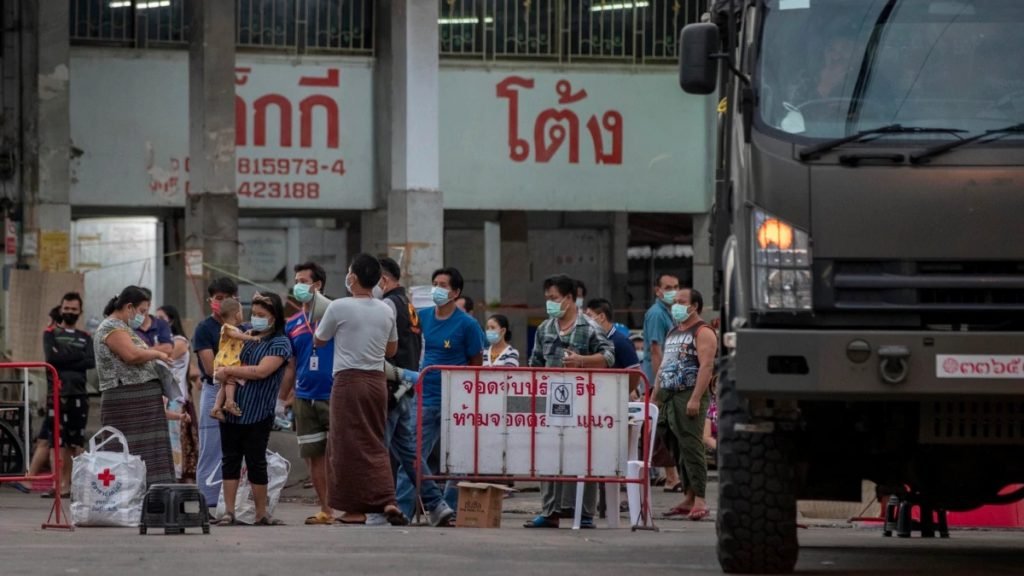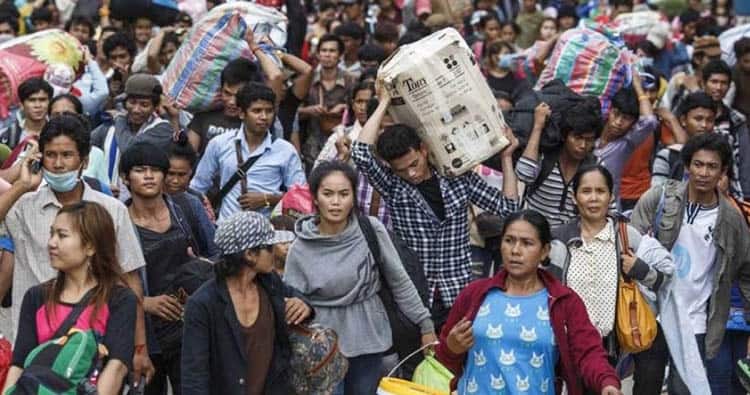Hun Sen washes his hands of Cambodian migrants in Thailand

Cambodia’s migrant labour force in Thailand is only a problem for Prime Minister Hun Sen if they come back with COVID-19.
Thailand this week deported more than 200 Cambodian migrants in a bid to cut down the spread of coronavirus. The solution proposed by Hun Sen, who has previously told Cambodian workers in Thailand to stay there, shows his inability to devise policy.
He puts the blame for migration on human traffickers and has ordered pre-trial detention for people who cross the border to find work in Thailand and then return home. “We must take strict measures to apprehend them all and minimize the problem,” he says. “This is a way to respect human rights. Then, let human rights workers deal with these bad guys.”

There are officially 1.8 million Cambodians working in Thailand, though undocumented workers probably bring the total to over two million. About a quarter of them are illegal. The plight of such workers was desperate enough even before COVID-19. The pandemic means that many have lost their jobs in Thailand’s tourism-driven economy. Rather than support from their home government, they now face the risk of arrest.
The truth is that their exodus and miserable plight is the result of the failure of Hun Sen’s government to manage the national economy and generate jobs. According to the United Nations Office on Drugs and Crime (UNODC), the main cause of emigration from Cambodia to Thailand before COVID-19 was economic.
Even in the years when Cambodia achieved economic growth, it lagged far behind Thailand. Most sections of the population, especially those with little education living in rural areas, did not benefit, UNODC found. Low official unemployment rates conceal the fact that many rural people do not work full time or have anything like enough money to live on. Population growth worsens the problem. The number of people coming onto the labour market in Cambodia is estimated to increase by between 250,000 and 300,000 each year.
Failure over decades to build a working education system is a powerful push factor. The International Organization for Migration (IOM) found that 57% of Cambodian migrants to Thailand who returned to Cambodia between March and June 2020 have only primary-level education. The survey found that 39% of the returnees had no monthly income whatsoever.
UNODC points out that a vacuum in terms of the law, policy and institutional and administrative frameworks makes it hard to regulate labour migration, or even to distinguish between lawful labour migration and human trafficking. Many Cambodians have no choice but to take the risk. The alternative to migration to Thailand, one respondent told UNODC is “sitting around with nothing to do, slowly starving to death.”

Women most vulnerable
For as long as Cambodia fails to create jobs, many of its citizens will be at the mercy of their employers in neighbouring countries. The International Labour Organisation (ILO) found in May 2020 that 32% of Cambodians surveyed in Thailand reported abuses such as inability to refuse work during the lockdown, being made to take unpaid leave, having their personal documents kept by their employer, harassment and violence. Women were more likely to suffer these problems.
The outlook for women returnees to Cambodia is especially bleak. The ILO says that women migrant workers returning to Cambodia are much less likely than men to find employment. Returning women are at greater risk of the workplace, family and domestic violence, meaning that a response system to gender-based violence is crucial, the ILO finds. Not surprising, then, that the proportion of women returnees planning to re-migrate was three times as high as for men.
Many Cambodians are driven to emigrate by the dictates of debt. Massive growth in Cambodian microfinance lending in recent years has relied on migration to Thailand as a way to service the loans. By the end of 2019, more than 2.6 million Cambodians had accumulated more than $10 billion in microfinance debt.
Researchers from human rights group LICADHO surveyed the implications in September 2019 in a village in Cambodia’s northwestern Banteay Meanchey province near the Thai border. They found that microfinance debt was the primary cause of migration, with the majority of respondents afraid of having their land seized because of their debt. Hun Sen has openly encouraged microfinance lenders to seize land and property tied to non-performing loans.
A responsible government would take basic steps to educate and create jobs at home and protect those who do migrate. It would oblige microfinance lenders to give debt relief and write off loans when people are unable to pay and make special efforts to reintegrate returning women. Having failed to do those things, the least the government can do is to offer emergency support for those forced to come home. Instead, it threatens to lock them up.


















